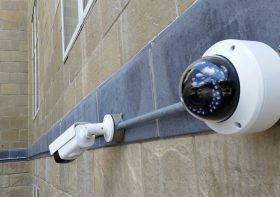Aerial Security Integration Delivering Cost-Effective Monitoring And Enhanced Risk Management

Modern surveillance extends beyond static sensors and fixed cameras. Aerial systems now blend automation with human judgment to prevent threats before they occur. This integration reshapes how organizations secure vast zones, assess patterns, and react instantly. Solutions from https://watchmenps.com/san-antonio demonstrate how adaptable technology can balance cost, speed, and accuracy effectively.
Evolving Dynamics Of Aerial Surveillance
Aerial monitoring has evolved into a precise, intelligence-oriented system. Rather than merely observing, drones now analyze activity patterns and transmit live analytical feedback. The integration of thermal sensors, AI-driven recognition, and adaptive flight paths strengthens precision and contextual awareness.
Enhanced Monitoring Through Layered Systems
Layered systems merge aerial and ground technologies into one synchronized network. Each layer complements the other, ensuring total coverage and minimizing gaps. The result is improved clarity, faster detection, and coordinated responses without delay.

Drone Integration Boosting Risk Control
Drones act as agile support units within larger frameworks. Their quick lift-off, steady stabilization, and adaptable routing make them vital for urgent monitoring tasks.
Operational Advantages:
- Rapid launches allow immediate visual confirmation
- Automated path adjustments expand surveillance reach
- Live imagery strengthens tactical communication
Performance Enhancements:
- Sharper identification of movement irregularities
- Reduced error margins during verification
- Quicker cross-unit collaboration across field divisions
Streamlined Operations Through Smart Coordination
Merging aerial feeds with control dashboards enhances communication flow. Automated alerts shorten reporting time while synchronized visuals aid quicker reactions. Personnel can concentrate on managing outcomes rather than sorting through fragmented updates.
Modern Approaches To Cost Management
Aerial integration cuts operational expenses while amplifying monitoring performance. Deploying scalable drones reduces vehicle fuel use and staff overtime demands. Every captured detail becomes part of a larger cost-saving framework that continuously evolves.
Tactical Insights Enhancing Risk Mitigation
Each image recorded builds a clearer understanding of future threats. With pattern analysis, decision-makers gain predictive foresight and actionable intelligence. Platforms like https://watchmenps.com/san-antonio help deliver precision monitoring adaptable to dynamic, multi-site operations. This evolution shifts safety management from reaction to anticipation, making every response data-informed.
Everyday Coordination With Real-Time Response
Small daily adjustments highlight aerial integration’s real value. Teams can reroute mid-flight to track motion or confirm clearance. Communication flows effortlessly between units, building a circular loop of protection.
It feels intuitive, not mechanical. Operators adjust plans seamlessly as conditions shift mid-mission. Rather than replacing roles, aerial tools extend reach, improve timing, and refine overall awareness.
Consistent Performance For Future Scalability
As technology evolves, aerial integration grows alongside organizational complexity. Systems upgrade through firmware, AI recalibration, and wider compatibility layers. These advancements ensure precision remains steady as network demands expand and diversify.



